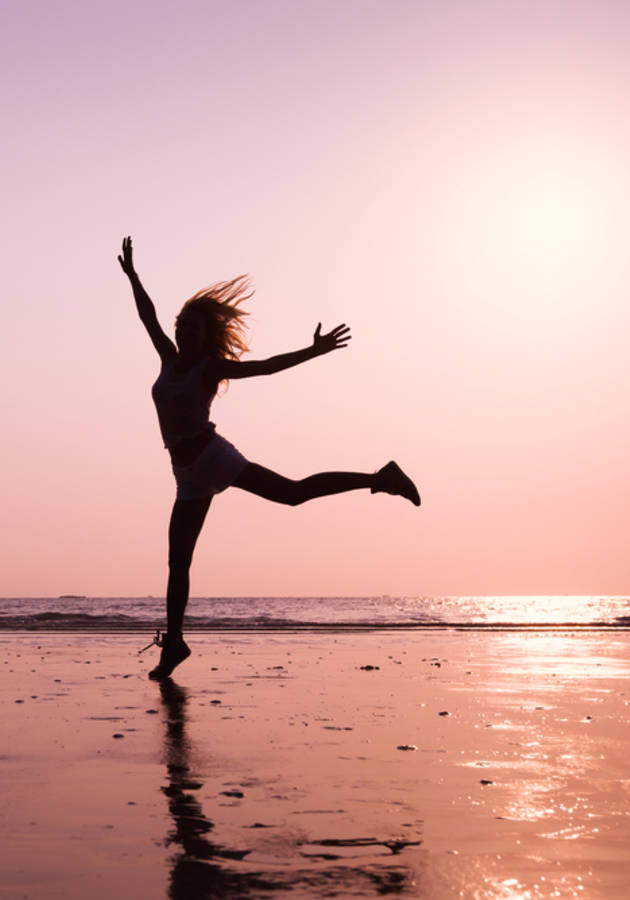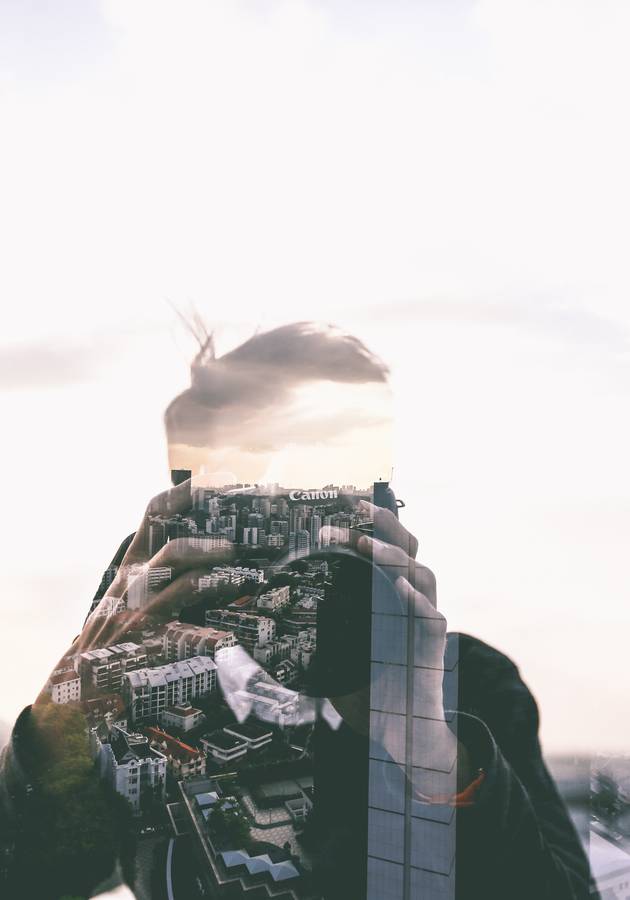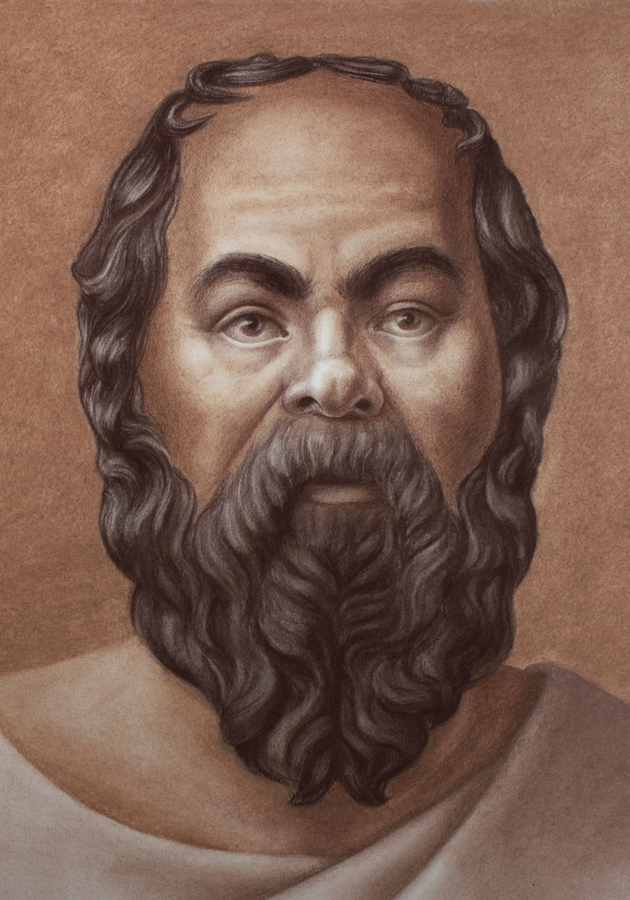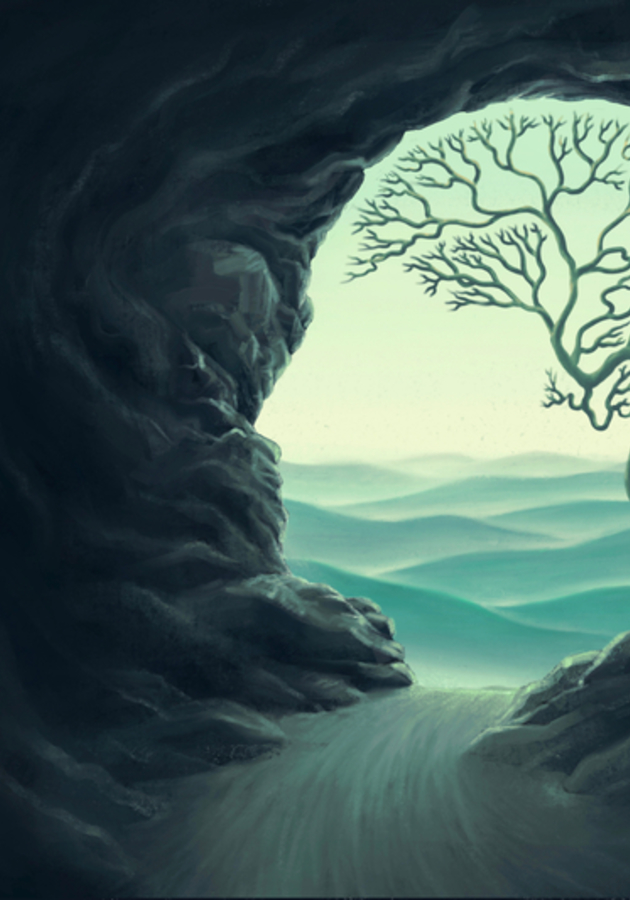Margarita Alcantara is the daughter of a Western physician, a licensed acupuncturist and self-confessed empath. A firm believer in the idea that physical healing is connected to spiritual and emotional healing, she has dedicated her life to developing a more integrative approach to medicine that combines the scientific rigor of the Western mind with Eastern recuperative and therapeutic practices. The purpose of her book “Chakra Healing” is to familiarize anyone who’s new to the subject of chakras with their nature and functions, as well as their importance as a factor in almost every aspect of your daily life.
Nevertheless, as she writes, “Whether you’re new to the world of chakras and energy healing and need a foundational primer to get you started, or you already have a deep knowledge of the system and want a refresher on the basics, this book should help you heal yourself, through understanding and care of your chakras.” So, get ready for a brief beginner’s guide to your seven chakras and a few pieces of advice on how to begin balancing them from within!
The ballad of East and West
Western medicine is physical. In other words, it is interested almost exclusively in the material aspects of our being. Ever since it was founded in Ancient Greece, it has primarily attempted to understand the parts that make up our physical bodies – muscles, bones, nerves and whatnot – and figure out all the different interactions between them. Hence, it’s perfect for urgent situations (such as bleeding or a broken bone), but very bad for chronic conditions (such as asthma or diabetes) and sorely lacking the knowledge for treating unpleasant emotional responses to the environment (such as loneliness, frustration or suffering).
That’s because Western medicine is so steeped in materialistic explanations of everything that it completely ignores the other thing that constitutes the basis of all objective phenomena: energy. Fortunately, Eastern medicine has always been primarily interested in energy. Hence, all the different names for it: qi, ki, chi, prana, mana. Hence, all the talk about balance and harmony, about opposing forces and Yin-Yang. Hence, all the interest in things such as emotions and souls.
When Western doctors fail to find a physical cause for an ailment, they dismiss it as something imagined or nonexistent. On the other hand, Eastern thinkers have known, ever since time immemorial, that the roots of many ailments aren’t physical at all. It’s not that you can’t cure things such as grief or guilt – it’s just that healing them is not something that can be done on an operating table. Scalpels can cut through the flesh but not through the spirit; they are designed to have a physical, but not an emotional impact. And many of your ailments can only be treated emotionally – not from the outside, but from within. To state things straightforwardly, the physical body is not the only body you have: you have an energy body as well.
“The energy body,” explains Alcantara, “is the human energy field that extends beyond the physical body. Much as your physical body consists of many layers – your nervous system, musculature, and skeletal system – with intricate, overlapping functions, your energy body also consists of many interacting layers. Like your physical body, each layer serves a specific purpose and the layers work collectively as one. Together, the layers of your energy body are called your aura. Your aura interacts with your physical body as well as your energy centers, or chakras.” And chakras are our main point of interest.
What are chakras?
In Sanskrit, the word chakra – or cakra – means “wheel” or “cycle.” Its earliest appearance can be found in the “Vedas,” the oldest Hindu sacred texts, written between 1500 and 500 B.C. in the northwestern regions of the Indian subcontinent. However, as Alcantara informs us, many other ancient cultures – including the Egyptians, Chinese, Sufis, Zarathustrians, Greeks, Native Americans, Incas, and the Maya, among others – devised, at one point or another, similar ideas about our body’s inherent energy centers, believing them to be “a reflection of the natural law that exists within the universe and an intertwined counterpart to our physical selves.”
Chakras are energy vortexes that exist within each of us. Their function is twofold: not only do they transport energy between our physical body and our aura, but they also absorb energy from the universe around us into our aura and physical body. For all intents and purposes, you can think of your chakra system as not that dissimilar from your bloodstream. Your cardiovascular system, as you know from your biology classes, is an organ system that allows blood to circulate around your body and transport oxygen, nutrients and hormones to and from your cells. In this manner, the bloodstream provides each part of your physical body with nourishment and protection, while maintaining homeostasis and stabilizing temperature.
Well, your chakra system does something fairly similar. By connecting and supporting your physical and your energy self, it makes it possible for you to regulate and balance your body. The only difference between your chakra system and your bloodstream is that the former works in mysterious, covert ways. You can’t see gravity but you can observe its effects, and you can feel and experience its pull. Similarly, you can’t see your chakras, but, nevertheless, they play a vital role in the normal functioning of your body and mind.
According to Alcantara, “All living things – humans, animals, plants, trees, even the Earth – have a chakra system, a living system of energy vortexes, that exists within them. There are seven major chakras in the body, as well as several minor ones. Each one is associated with specific organs and glands, physical functions and dysfunctions, and emotional, mental, and spiritual issues.” We’ll consider that an invitation to get into the specifics.
The physical chakras
The seven major chakras in your body are all interconnected, but each of them serves a different purpose. The first three chakras – or the lower three chakras – are called physical chakras because they “ground us as human beings on Earth.” Let us briefly go over each of them and consider their nature and their main functions:
1.The root chakra. Called muladhara in Sanskrit, the root chakra is located at the perineum, between the anus and the genitals. Its color is red and its element is the Earth. Being primarily responsible for how safe and secure you are, it can be blocked by your fear of being alive or feelings such as guilt. When blocked or imbalanced, it causes physical dysfunctions such as chronic lower back pain and arthritis, and mental issues such as depression and lack of self-confidence. Its affirmation is: “I am.” Its lesson: manifest your basic needs and feel safe and secure in the “physical plane” of your existence.
2.The sacral (SAY-kral) plexus chakra. Located above the root chakra – about two inches below the navel – is the svadhisthana (svad-hish-thana), or the sacral plexus chakra. It is the one “most closely connected with sexual and reproductive activities, as well as emotions and creativity.” Hence, it can be blocked by sexual abuses or trauma, as well as gender issues. The color of the sacral plexus chakra is orange, its element is water and its affirmation is “I feel.” Its lesson: don’t ever lose your identity. Instead, use your emotions to connect with others openly and freely express your creativity and sexual desires.
3.The solar plexus chakra. The solar plexus chakra – or manipura in Sanskrit – is located two inches above the navel and corresponds with your personality, self-esteem, and sense of worth. Its color is yellow, and its element is fire. Since it is closely related to our need to dominate and dictate, it is usually blocked by issues of control in areas related to power. In such cases, it can cause numerous mental issues, ranging from fear and loss of trust to sensitivity, criticism and wounded personal honor. The physical dysfunctions related to imbalances in the solar plexus chakra are gastric or duodenal (doo-ah-DEE-knal) ulcers, anorexia, bulimia, hepatitis and diabetes. The life lesson it teaches us is “to experience the depth of who we are with self-empowerment and self-esteem, to live our life's task or soul’s life purpose.”
The heart chakra
In addition to the lower and upper three chakras – which we’ll have a look at in a minute – our energy body also includes the heart chakra, or anahata in Sanskrit. It deserves a separate entry because it’s the Rome of our chakra system: the place where all energy roads lead and converge:
4.The heart chakra. Located at the center of the chest, the heart chakra is the one that connects the lower with the upper chakras. Moreover, it also connects us with our Higher Self and the rest of the world. Its color is green, and its element is air. Its affirmation, unsurprisingly, is “I love.” The heart chakra can be blocked by one thing and one thing only: heartache. In such cases, people can experience mental issues such as loneliness, grief, hatred and self-centeredness; conversely, only when your heart chakra is open can you experience love, compassion, forgiveness, hope and trust. Numerous physical dysfunctions are associated with imbalances of the heart chakra, among them asthma, lung diseases and heart attacks. The lesson of the heart chakra is that we must experience compassion and connection with ourselves and others.
When the heart chakra is in harmony, writes Alcantara, “we are fully connected to ourselves, cultivate joy easily, love and accept ourselves (and, as an extension, others). We give and receive love genuinely, and cultivate compassion for self and others.” When it is not, we feel out of touch with who we are and we do not feel deserving of love. Hence, we are more susceptible to pain. Appropriately, the Sanskrit name for the heart chakra can be roughly translated into English as “unhurt.” In a way, that’s what a balanced heart chakra does: it unhurts pains and unbreaks hearts.
The spiritual chakras
The upper three chakras are called the spiritual chakras because they connect us to the Divine, as well as to our Higher Self – that is to say, “that version of ourself that is tapped into our purest expression of love, wisdom, and power.” They are, in order:
5.The throat chakra. The throat chakra is called vishuddha in Sanskrit and is located at the front of the base of the neck, at the hollow of the collarbone. When it is out of harmony, we feel silenced and judged, even unable to express ourselves and say something meaningful. We may lose our faith in ourselves and our dreams, and even our strength of will or power to make decisions and create. On a physical level, we may experience issues such as sore throat, stiff neck or thyroid problems. To speak and receive the Truth – that is the lesson the throat chakra teaches. Its element is, appropriately, sound. Its color: light blue.
6.The third eye chakra. Called ajna in Sanskrit, the third eye chakra is the center of our wisdom, spiritual insight and intuition. Located between the eyebrows, it is associated with our “sixth sense” and the pineal gland. Its affirmation is “I see,” its element – light and its color – indigo. When our third eye chakra is out of harmony, we are able to see only the physical reality in life and routinely reject the spiritual aspects of ourselves. In many ways, it can be said that the entire Western civilization has a blocked sixth chakra. That’s why it isn’t open to the ideas of others and lacks emotional intelligence. That’s why, metaphorically, it suffers from blindness, deafness, headaches and learning disabilities – some of the physical dysfunctions associated with imbalances of the third eye chakra.
7.The crown chakra. Located at the top and center of the head, the crown chakra – or sahasrara in Sanskrit – is the last of the spiritual chakras and our foremost connection to the Divine and our Higher Selves. Hence, its element is thought, and its affirmation is “I know.” Its color is usually purple, but it can be white and gold as well. To experience the divine meaning of life – that is the rousing call that people with an open and balanced crown chakra hear on a daily basis! The ones with blocked crown chakras are angry at God, depressed, alone and disconnected from the Divine. Some of them may even experience physical dysfunctions such as chronic exhaustion and extreme sensitivity to environmental factors.
Healing with chakras
Put in the simplest terms possible, when all of your chakras are in balance, you feel healthy and blissful and your life is in complete harmony. On the other hand, when any of the seven major chakras becomes blocked, you will eventually experience emotional distress or disease. “Because everything is energy,” writes Alcantara, “when we heal and maintain our energy body’s health – through modalities like acupuncture, Reiki, meditation, yoga, and qi gong, among others – and make better lifestyle and diet choices, we actually heal issues that may come up before they manifest in the physical body.”
It’s important to note that, even though it has originated in religious texts, chakra healing isn’t affiliated with any specific religion. In other words, you can cultivate your chakra health regardless of what you believe in. However, you’re the only person that can do this properly: chakra healing, to use Alcantara’s phrasing, is always “an inside job.” There are healing practitioners like herself that can help you on your journey, but in the end, you are the only one who can do the healing. To achieve this, you must be patient with yourself and understand that chakra healing isn’t a noun, but a verb – not an objective, but an inner exploration.
There are a number of different methods you can use at home to help heal your chakras. Meditation and visualizations, for example, should help you tame your “monkey mind” and cultivate a sense of deep awareness and inner peace over time. They will also help you change your old habits and beliefs with new, healthier ones. Asana yoga will help you heal imbalances in your chakras by strengthening your physical, mental and spiritual self. If you’re willing to work with a professional, try acupuncture and Reiki, the Japanese energy healing technique that balances the chakras.
Moving on to even more alternative methods, crystals – each of which is associated with one of the major chakras – can redirect and rebalance the energy inside your aura, and even develop some of your inner strengths and gifts. The same holds true for essential oils – just five to six drops of a particular essential oil can ground, center, release or open a certain chakra. Finally, you should never forget your diet. Food, as Alcantara says, is “not only a way to sustain your physical body, but a way to support your energy body as well – the foods you eat can help your chakras heal energetically.”
Final notes
“If you’re looking for one book to start your healing journey,” wrote soul wealth coach Corrina Steward in a brief review of Alcantara’s book back in 2017, “’Chakra
Healing’ is the book you require. This beginner's guide is super comprehensive on the chakras and yet not overwhelming.”
That’s a correct estimate. If you know nothing of the chakra system and related concepts, then try Alcantara’s introduction. If you’ve already read something – even a few Wikipedia articles – then this book might leave you disappointed. Though a handy guide for novices, it’s nothing more than that. But then again, it doesn’t aim to be.
12min tip
Regardless of whether you believe in chakras or not, it’s never a bad idea to deal with bodily imbalances. So, practice meditation and yoga, and, by all means, take care of your diet and eat healthy.





























